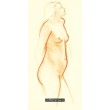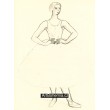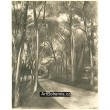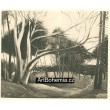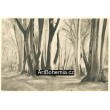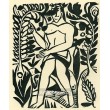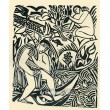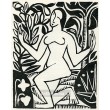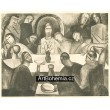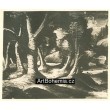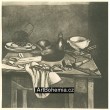Košík
0
x
Produkty
(prázdný)
Žádné díla
Bude determinováno
Dopravné a balné
0 Kč
Celkem
Produkt byl úspěšně přidán do nákupního košíku
Počet
Celkem
0 ks zboží.
1 dílo v košíku.
Za díla:
Doručení a balné:
Bude determinováno
Celkem
Kategorie
- grafiky/tisky
- obrazy
- kresby
- plakáty
- fotografie
- exlibris
- bibliofilie
- knihy/katalogy
- starožitnosti
- sochy/plastiky
- sklo
-
Hnutí
- abstrakce
- art-deco
- čs.avantgarda/moderna
- expresionismus
- fauvismus
- impresionismus
- kubismus
- naivní umění
- op-art
- poetismus
- pop-art
- realismus
- secese
- sociální kritika
- soudobá tvorba
- surrealismus
- světová avantgarda/moderna
- Škola prof. Albína Brunovského
- Škola prof. Zdeňka Sklenáře
- Škola prof.Julia Mařáka - mařákovci
- Žánr
- Zprávy/NEWS
- Doporučujeme
Nová díla
-

Zamilovaný klaun
484 Kč -

Světlo na profil v dlani (Prosby)
1 452 Kč -

Světlo na klečícího (Prosby)
1 452 Kč
-

Píseň písní V
678 Kč -30% 968 Kč
Hnutí
- abstrakce
- art-deco
- čs.avantgarda/moderna
- expresionismus
- fauvismus
- impresionismus
- kubismus
- naivní umění
- op-art
- poetismus
- pop-art
- realismus
- secese
- sociální kritika
- soudobá tvorba
- surrealismus
- světová avantgarda/moderna
- Škola prof. Albína Brunovského
- Škola prof. Zdeňka Sklenáře
- Škola prof.Julia Mařáka - mařákovci
Žánr
NEJŽÁDANĚJŠÍ UMĚLCI
- Anderle Jiří
- Augustovič Peter
- Benca Igor
- Beneš Karel
- Bím Tomáš
- Born Adolf
- Brun Robert
- Brunovský Albín
- Boštík Václav
- Bouda Cyril
- Bouda Jiří
- Braque Georges
- Brázda Jiří
- Buffet Bernard
- Cézanne Paul
- Čapek Josef
- Čápová Hana
- Dalí Salvador
- Demel Karel
- Dudek Josef
- Dufy Raoul
- Effel Jean
- Felix Karol
- Filla Emil
- Giacometti Alberto
- Grosz George
- Chagall Marc
- Istler Josef
- Janeček Ota
- Jiřincová Ludmila
- Kandinsky Wassily
- Kĺúčik Peter
- Komárek Vladimír
- Kulhánek Oldřich
- Kupka František
- Lada Josef
- Lhoták Kamil
- Matisse Henri
- Miró Joan
- Mucha Alfons
- Muzika František
- Picasso Pablo
- Pileček Jindřich
- Reynek Bohuslav
- Sukdolák Pavel
- Suchánek Vladimír
- Svolinský Karel
- Šíma Josef
- Špála Václav
- Švabinský Max
- Švengsbír Jiří
- Tichý František
- Toulouse-Lautrec Henri de
- Toyen
- Trnka Jiří
- Váchal Josef
- Vik Karel
- Warhol Andy
- Zábranský Vlastimil
- Zoubek Olbram
- Zrzavý Jan
Seznam děl umělce Derain André
André Derain was born in 1880 into a family in the Dairy trade, who did not opppose his artist's vocation. Aged 15 he painted his first pictures and then enrolled at the Academie Carriere, where he met Matisse and Vlaminck whose studio he shared. In 1904
André Derain was born in 1880 into a family in the Dairy trade, who did not opppose his artist's vocation. Aged 15 he painted his first pictures and then enrolled at the Academie Carriere, where he met Matisse and Vlaminck whose studio he shared. In 1904, Matisse put them in touch with the art-dealer Ambroise Vollard, who bought up the contents of their studio. Derain showed at the 1905 Salon d'Automne in Paris with Vlaminck and Matisse ; the art critic Louis Vauxcelles declared their work to be "fauves" (literally, a wild beast).
Derain then split with Vlaminck, following Vollard's advice, he went to London where he painted his famous views of Hyde Park and of the river Thames. He next illustrated his friend Apollinaire's "L'enchanteur Pourrissant" with a set of woodcuts, the works being published by Kahnweiller in 1909. After the 14 - 18 war during which he was called up, Derain's painting became more conventional, consisting mainly of portraits, nudes, landscapes. An auspicious period dawned, his new dealer Paul Guillaume making a famous artist of him.
In the twenties, Derain showed in Paris, Munich and New York. Another side to his work was the design of stage-costumes and scenery ; Derain produced numerous prints, lithographs or etchings ; besides the woodcuts for Apollinaire, he illustrated the "Satyricon" with 33 etchings ; "Décervelages" with 8 etchings and aquatints, Max Jacob's "Le siège de Jerusalem, Grande Tentation Céleste de Saint Matorel", illustrated in 1914 with 3 dry-points, etc. The artist died in 1954. In: http://www.michelfillion.com/oeuvres_eng.php?artiste=DERAIN * * * * *
(b Chatou, nr Paris, 17 June 1880; d Garches, 8 Sept 1954). French painter, sculptor, illustrator, stage designer and collector. He was a leading exponent of FAUVISM. In early 1908 he destroyed most of his work to concentrate on tightly constructed landscape paintings, which were a subtle investigation of the work of Cézanne. After World War I his work became more classical, influenced by the work of such artists as Camille Corot. In his sculpture he drew upon his knowledge and collection of non-Western art.
There are more than 45,000 articles in The Grove Dictionary of Art. To access the rest of this article, including the bibliography, subscribe to www.groveart.com. To find out more about this subject, click on a related article below and subscribe to www.groveart.com
Derain, André
Classicism, §7: 20th century: Post-modernism
France, §III, 6(i): Painting & graphic arts, after c 1914: The rappel à l’ordre
France, §IV, 6(i): Sculpture, c 1900–c 1945
Oil painting, §2(iii): 18th–20th centuries
Rouault, Georges, §3: Development of mature style, 1913–30
Style, §1(iv): Usages and problems: Tetrad etc
books
Skira, Albert
collaboration
Lurçat: (1) Jean Lurçat
Master printers, §III: Specialization and collaboration
Matisse, Henri, §2: 1897–1904
dealers
Flechtheim, Alfred
Guillaume, Paul
Kahnweiler, Daniel-Henry
Vollard, Ambroise
exhibitions
Group of Plastic Artists
Sitwell
groups and movements
Ecole de Paris
Fauvism, §1: Definition and application of the term
Fauvism, §2: Historical influences and development from c 1900
Fauvism, §4: Triumph and dissolution of fauvism, 1905–8
Jack of Diamonds
Neo-Impressionism, §3: The decline of Neo-Impressionism and the `second phase’ of influence
Post-Impressionism, §1: History and application of the term
Vlaminck, Maurice de
methods
Colour, §I, 4: Western world, 20th century: Abstract art
paintings
Decadence and decline, §3: Cultural decadence in the 19th century
Landscape painting, §II, 8: 20th century
patrons and collectors
Fénéon, Félix
Fénéon, Félix
Kramár, Vincenc
Kramár, Vincenc
Lévy, Pierre and Denise
Lévy
Quinn, John
Quinn, John
Rump, Johannes
Rump, Johannes
Rupf, Hermann and Margrit
Rupf
Russev, Svetlin
Bulgaria, §XII: Museums, collections and art libraries
Shchukin, Sergey (Ivanovich)
Shchukin: (1) Sergey Shchukin
Soby, James Thrall
Soby, James Thrall
Tetzen-Lund, Christian
Tetzen-Lund, Christian
Zambaccian, K. H.
Romania, §VIII, 2: Patronage and collecting, c 1770 and after
personal collection
Teke, §3: Mask and masquerade
pottery
France, §VII, 1(ii): Pottery, 1600 and after
productions
Ballets Russes
reproductive prints by others
Villon, Jacques
studio
Studio, §II, 4: History and development, after c 1900
textiles
Dress, §IX: 20th century
woodcuts
Apollinaire, Guillaume
Woodcut, §II, 6(i): 20th century: Revival, pre-World War II
In: http://www.artnet.com/library/02/0222/T022279.asp
Derain, André (1880-1954), French painter, who was a leader in several avant-garde art movements of the early 20th century. Born in Chatou, near Paris, he abandoned his early engineering studies to pursue an artistic career. In 1905, along with Maurice de Vlaminck and Henri Matisse, he became a member of the Fauves (“wild beasts”), so named because the bold and unrealistic colours that they used appeared savage at the time (See Fauvism). Most of Derain's works of this period were landscapes and cityscapes, such as London Bridge (1906, Museum of Modern Art, New York). They show the typical Fauvist characteristics of pure colour (often squeezed onto the canvas directly from the tube), choppy brushstrokes, frenzied composition, and lack of concern for perspective or realistic depiction.
After 1908, Derain began to experiment with other styles. The influence of Paul Cézanne led him to prefer quieter colours and more controlled compositions. His great Bathers (1908, location unknown) represented an attempt to combine the innovations of previous painters, such as Claude Monet and Cézanne, in a single all-encompassing synthesis. In 1910, Derain produced highly geometric, Cubist-influenced works such as The Old Bridge at Cagnes (National Gallery, Washington, D.C.). His late work, after 1912, showed the influence of many styles—including classical French art and African sculpture—and tended to become increasingly traditional and derivative, characterized by muted colour and fussily elaborated technique. Derain also designed woodcut book illustrations and, in 1919, he designed stage sets for Sergei Diaghilev's Ballets Russes.
In: MS Encarta
Zobrazit
Derain then split with Vlaminck, following Vollard's advice, he went to London where he painted his famous views of Hyde Park and of the river Thames. He next illustrated his friend Apollinaire's "L'enchanteur Pourrissant" with a set of woodcuts, the works being published by Kahnweiller in 1909. After the 14 - 18 war during which he was called up, Derain's painting became more conventional, consisting mainly of portraits, nudes, landscapes. An auspicious period dawned, his new dealer Paul Guillaume making a famous artist of him.
In the twenties, Derain showed in Paris, Munich and New York. Another side to his work was the design of stage-costumes and scenery ; Derain produced numerous prints, lithographs or etchings ; besides the woodcuts for Apollinaire, he illustrated the "Satyricon" with 33 etchings ; "Décervelages" with 8 etchings and aquatints, Max Jacob's "Le siège de Jerusalem, Grande Tentation Céleste de Saint Matorel", illustrated in 1914 with 3 dry-points, etc. The artist died in 1954. In: http://www.michelfillion.com/oeuvres_eng.php?artiste=DERAIN * * * * *
(b Chatou, nr Paris, 17 June 1880; d Garches, 8 Sept 1954). French painter, sculptor, illustrator, stage designer and collector. He was a leading exponent of FAUVISM. In early 1908 he destroyed most of his work to concentrate on tightly constructed landscape paintings, which were a subtle investigation of the work of Cézanne. After World War I his work became more classical, influenced by the work of such artists as Camille Corot. In his sculpture he drew upon his knowledge and collection of non-Western art.
There are more than 45,000 articles in The Grove Dictionary of Art. To access the rest of this article, including the bibliography, subscribe to www.groveart.com. To find out more about this subject, click on a related article below and subscribe to www.groveart.com
Derain, André
Classicism, §7: 20th century: Post-modernism
France, §III, 6(i): Painting & graphic arts, after c 1914: The rappel à l’ordre
France, §IV, 6(i): Sculpture, c 1900–c 1945
Oil painting, §2(iii): 18th–20th centuries
Rouault, Georges, §3: Development of mature style, 1913–30
Style, §1(iv): Usages and problems: Tetrad etc
books
Skira, Albert
collaboration
Lurçat: (1) Jean Lurçat
Master printers, §III: Specialization and collaboration
Matisse, Henri, §2: 1897–1904
dealers
Flechtheim, Alfred
Guillaume, Paul
Kahnweiler, Daniel-Henry
Vollard, Ambroise
exhibitions
Group of Plastic Artists
Sitwell
groups and movements
Ecole de Paris
Fauvism, §1: Definition and application of the term
Fauvism, §2: Historical influences and development from c 1900
Fauvism, §4: Triumph and dissolution of fauvism, 1905–8
Jack of Diamonds
Neo-Impressionism, §3: The decline of Neo-Impressionism and the `second phase’ of influence
Post-Impressionism, §1: History and application of the term
Vlaminck, Maurice de
methods
Colour, §I, 4: Western world, 20th century: Abstract art
paintings
Decadence and decline, §3: Cultural decadence in the 19th century
Landscape painting, §II, 8: 20th century
patrons and collectors
Fénéon, Félix
Fénéon, Félix
Kramár, Vincenc
Kramár, Vincenc
Lévy, Pierre and Denise
Lévy
Quinn, John
Quinn, John
Rump, Johannes
Rump, Johannes
Rupf, Hermann and Margrit
Rupf
Russev, Svetlin
Bulgaria, §XII: Museums, collections and art libraries
Shchukin, Sergey (Ivanovich)
Shchukin: (1) Sergey Shchukin
Soby, James Thrall
Soby, James Thrall
Tetzen-Lund, Christian
Tetzen-Lund, Christian
Zambaccian, K. H.
Romania, §VIII, 2: Patronage and collecting, c 1770 and after
personal collection
Teke, §3: Mask and masquerade
pottery
France, §VII, 1(ii): Pottery, 1600 and after
productions
Ballets Russes
reproductive prints by others
Villon, Jacques
studio
Studio, §II, 4: History and development, after c 1900
textiles
Dress, §IX: 20th century
woodcuts
Apollinaire, Guillaume
Woodcut, §II, 6(i): 20th century: Revival, pre-World War II
In: http://www.artnet.com/library/02/0222/T022279.asp
Derain, André (1880-1954), French painter, who was a leader in several avant-garde art movements of the early 20th century. Born in Chatou, near Paris, he abandoned his early engineering studies to pursue an artistic career. In 1905, along with Maurice de Vlaminck and Henri Matisse, he became a member of the Fauves (“wild beasts”), so named because the bold and unrealistic colours that they used appeared savage at the time (See Fauvism). Most of Derain's works of this period were landscapes and cityscapes, such as London Bridge (1906, Museum of Modern Art, New York). They show the typical Fauvist characteristics of pure colour (often squeezed onto the canvas directly from the tube), choppy brushstrokes, frenzied composition, and lack of concern for perspective or realistic depiction.
After 1908, Derain began to experiment with other styles. The influence of Paul Cézanne led him to prefer quieter colours and more controlled compositions. His great Bathers (1908, location unknown) represented an attempt to combine the innovations of previous painters, such as Claude Monet and Cézanne, in a single all-encompassing synthesis. In 1910, Derain produced highly geometric, Cubist-influenced works such as The Old Bridge at Cagnes (National Gallery, Washington, D.C.). His late work, after 1912, showed the influence of many styles—including classical French art and African sculpture—and tended to become increasingly traditional and derivative, characterized by muted colour and fussily elaborated technique. Derain also designed woodcut book illustrations and, in 1919, he designed stage sets for Sergei Diaghilev's Ballets Russes.
In: MS Encarta
Fotografie
 |  |  |

